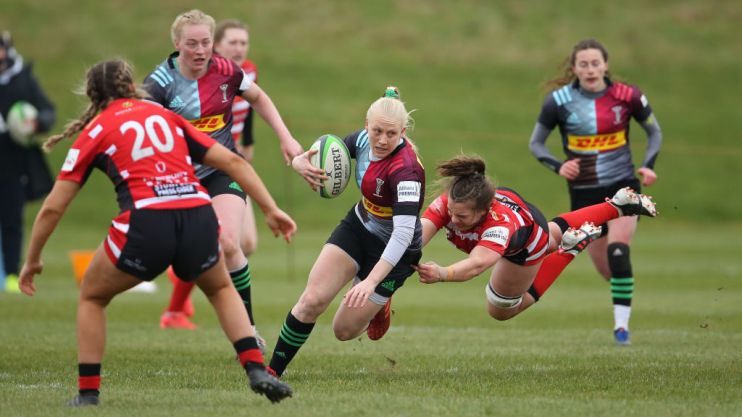Women’s rugby has just showed it is streets ahead of the men’s game with new competition WXV

“It’s not as good as men’s.” That is such an obvious response to any number of women’s sports.
As if to evidence such a lowly perception of women’s sport, the recent announcement of the Women’s Six Nations postponement was met with a deluge of misogyny and comments from men who said they simply “don’t care”.
Initiated by Stef Evans of Bristol Bears, the women’s rugby community countered in their droves, creating the #ICare social movement to show the world just how much people do care for the women’s game.
The direct comparison of sport played by women with sport played by men sits at the very core of what has held back investment, attention, and support for women’s sport – three things that have been in short-supply for decades and exacerbated when Covid-19 hit it so hard last year.
It is why I was pleased this week to be reminded of the Albert Einstein quote “In the midst of every crisis lies great opportunity”, when hearing the announcement of World Rugby’s £6.4m investment into a new landmark global women’s rugby competition, WXV, which starts in 2023.
On paper the format looks good. Regional competitions, like the Women’s Six Nations, will determine qualification into one of the three tiers that will make up the WXV, with traditional promotion and relegation between them taking place after year one.
The competition has been lauded so far, with some stating it will “accelerate the women’s game globally”. A bold claim, certainly, but one I believe has merit.
It is impossible to ignore the disparity in the quality and investment within international women’s rugby globally – one of the reasons why (right now) the concept of a women’s British & Irish Lions Tour is fundamentally flawed.
The construct of regional qualification and the phased introduction of nations once they’ve had more time to prepare gives room for progressive development and future opportunities. It isn’t penalising those nations whose women’s rugby programmes are currently behind the curve.
WXV gives the developing nations a goal and realistic prospects, professionally and commercially, by being part of a global platform for women’s rugby.
Enlightened, collaborative and coherent
There are no excuses left for unions not to invest in the women’s game. If the vision, platform and opportunity is not compelling enough, then pride could be an overriding factor.
Regional competitions like the Women’s Six Nations are a closed group; a safe environment where no one is going anywhere and there’s no one biting at your heels.
The inclusion of tiers, promotion and relegation is standard practice in most leagues, but a critical inclusion here and why no union will want to drop below a certain level.
WXV is a platform where your investment and support of your women’s team is laid bare for the world to see.
WXV is a very large chunk of the women’s rugby puzzle, but the effort and investment required to position the remaining pieces is not insignificant – not least, the task of evolving the global perception of the game.
Women’s rugby has some of the tallest and widest barriers in place from a public and societal perspective, and this is a marketing job.
The superpower of women’s sport is in its ability to challenge stereotypes. The time is now to ride the enormous wave of gender equality by pushing against the barriers and positioning rugby as uniquely relevant for women: empowering, collaborative and with a global community that comes together for collective benefit.
WXV is an enlightened, collaborative, coherent approach to women’s rugby. Men’s rugby has been so bogged down in politics and self-interest, it seems almost unfair to compare it with the women’s game.
Lisa Parfitt is Co-Founder at sports and entertainment marketing agency The Space Between – www.spacebetweenagency.com